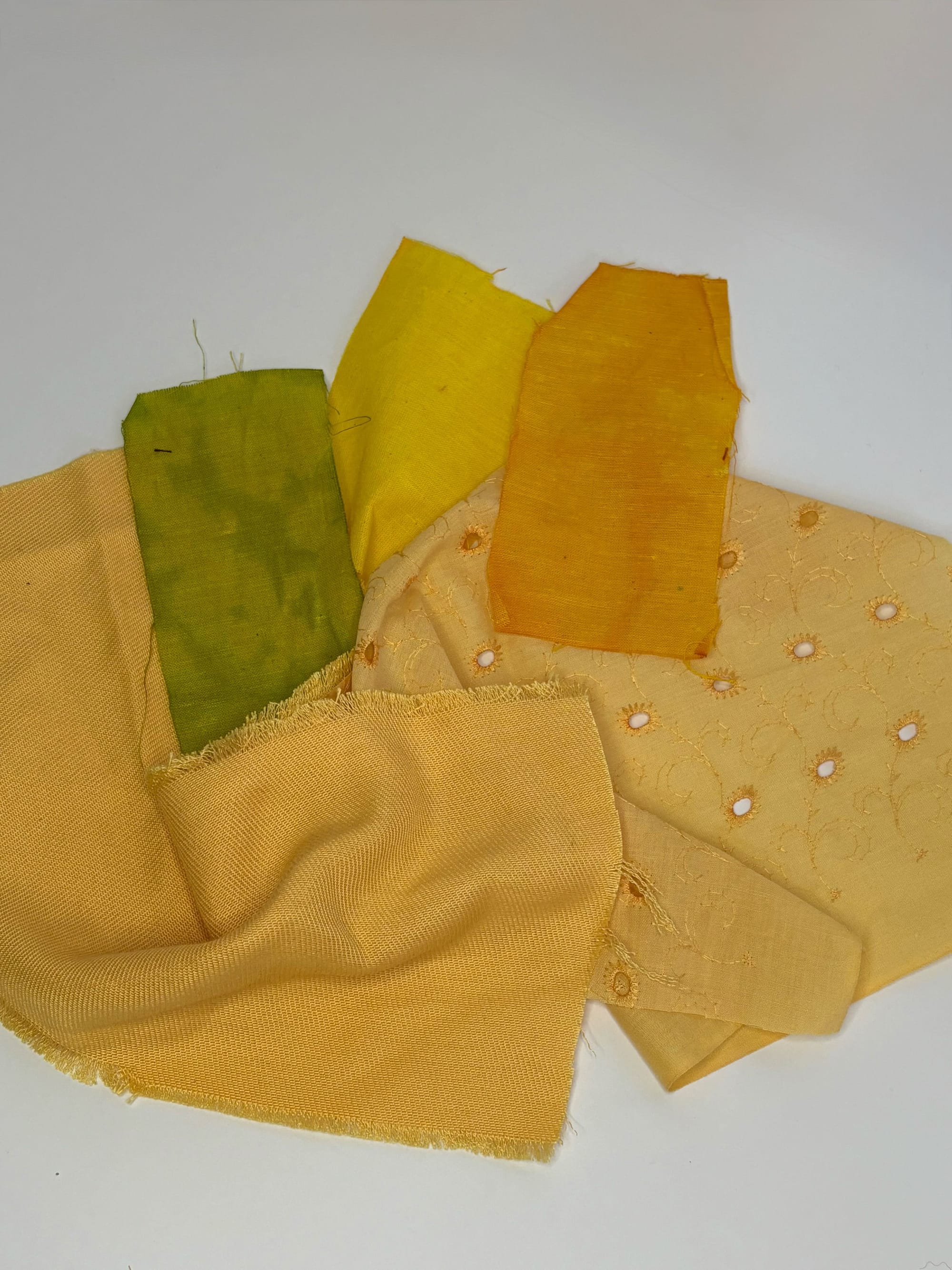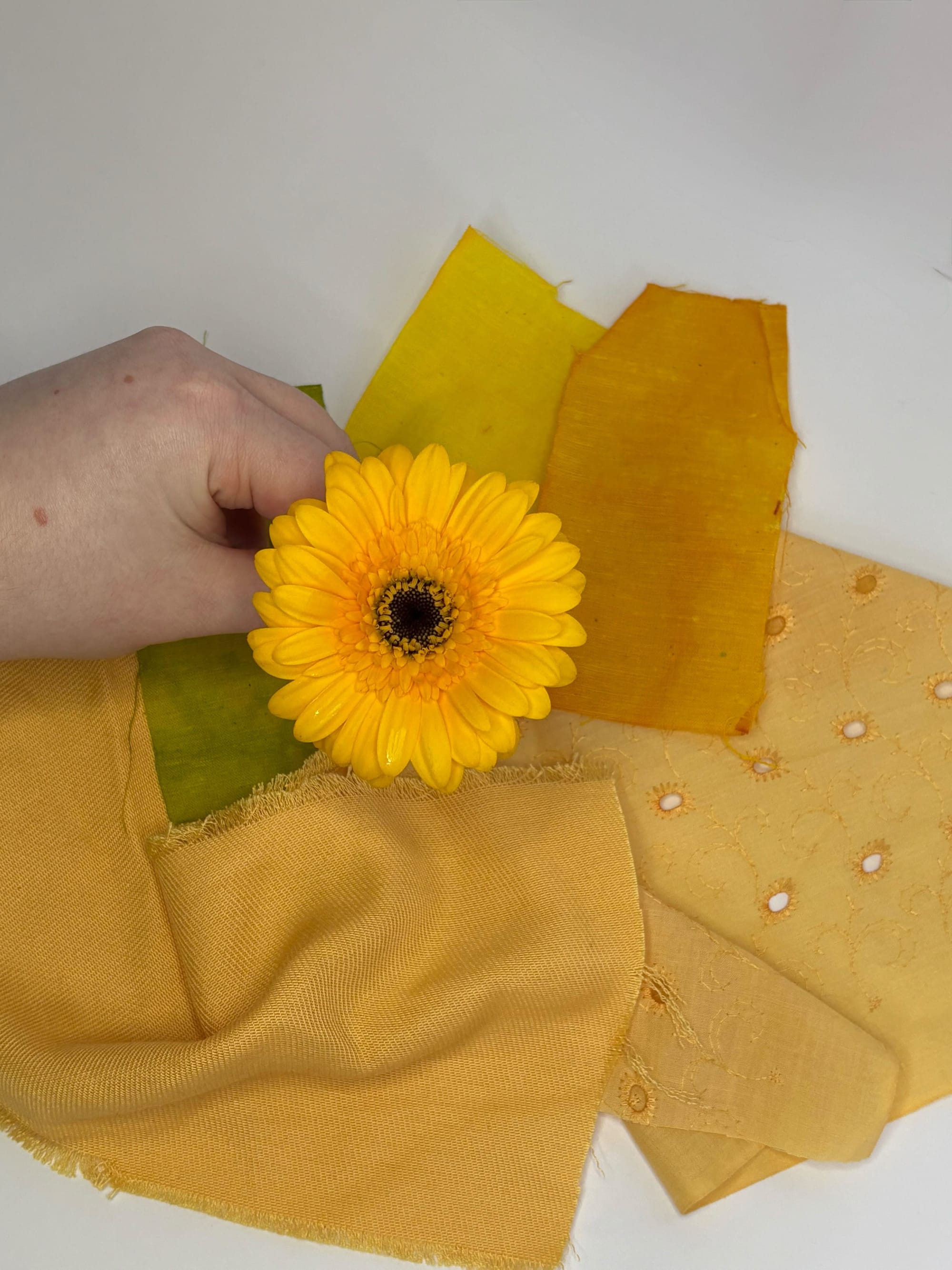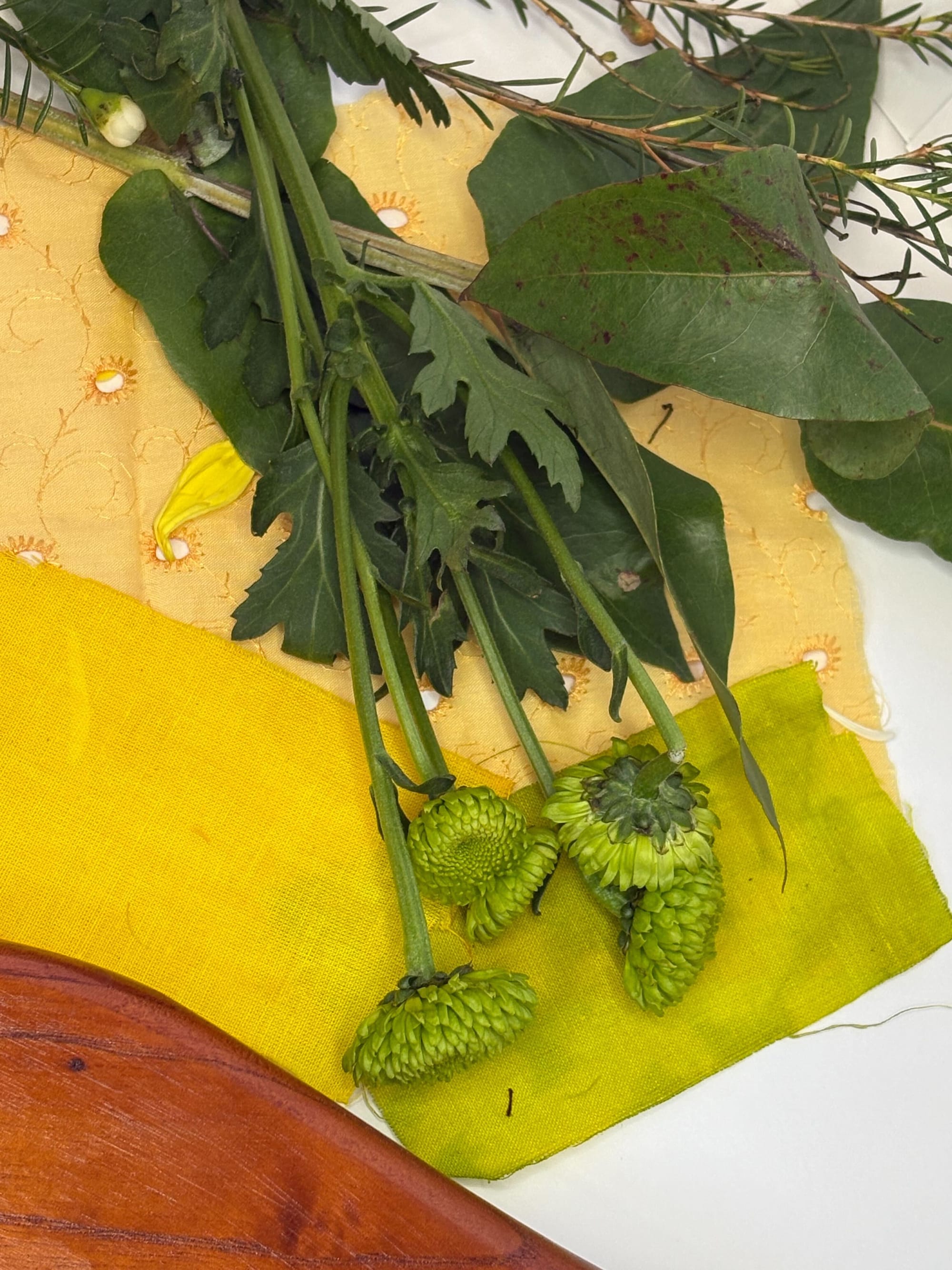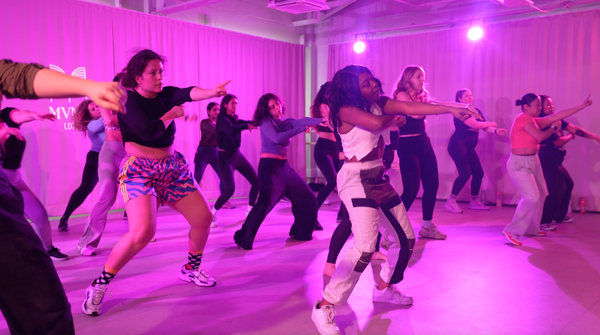The Natural Way to Revamp Your Wardrobe🌿👕✨

In a critical decade of waste, sustainability in fashion is always a key talking point. As conscious customers shop more responsibly for longevity in their everyday lives, their clothing follows suit. From shopping vintage to buying eco-friendly denim, the playful activism of sustainability is becoming more than a trend. So, dive into your spring wardrobe and morph your drab pieces into vibrant outfits with items ready to be used.
Whether you’re after subtle shades of spring or vibrant pops of playfulness, dyeing sustainably can bring a new lease of life to your clothes, turning classic styles into something completely unique.
Take a tip from Stella McCartney and change your wardrobe with a DIY kit right from your garden, turning your linen trousers into a sustainable, runway moment.
Different natural materials will work for this technique, but to get the most out of your colour, it’s best to use cotton or other non-synthetic blends (the more natural the fabric, the better!). This could be old white T-shirts, linen trousers, or just about anything lying at the back of your wardrobe. If you're feeling bold, steer clear of synthetic blends and go all in on natural fibres.
Next comes the fun part—choosing your plants and veggies. This will determine the colours you get, so it’s time to forage in your garden (or fridge) for some serious colour inspiration. While there are no solid rules here, some plants offer more pigmented hues than others. Red cabbage leaves? They might just give your dress the deep transformation it’s been waiting for. Onion skins create burnt orange tones, while spinach leaves, rosemary and grass produce soft, earthy greens (more spinach = stronger colour!). Lemon and orange peel, turmeric, marigolds, and daffodils will give you the sunny yellow shades of the season. Want a punchier yellow? Mix in a little extra white vinegar during the colour extraction process—just like we did. Meanwhile, beetroot, raspberries and ripe red cabbage create rich maroons (be careful—too much and you’ll tip into purple). Blueberries and blackberries give soft blues, and avocado skins lend gentle pastels in minty greens.

Trying and testing is your best friend when it comes to natural dyeing—what works brilliantly one day might not the next. That’s part of the beauty. Embrace the softly coloured hues of spring, and have fun creating something completely fresh every time. Don’t be afraid to experiment with different plants, flowers, and foods. Kidney beans, for example, are an unexpected go-to for deeper shades—who says darker tones are only for winter?
@bea_organic Replying to @Wednesday bonne appétit! detailed tutorial in the comments👇🏻 #naturaldye #fashiondesigner #slowfashion #fashiontutorial #sustainablefashion
♬ son original - 𝘴𝘢𝘮𝘪𝘢
All you’ll need is a saucepan, a jar, cheesecloth (or even a towel, coffee filter, or scrap fabric will do the trick), some water and a heat source. No chemicals, no faff.
To extract your dye, you can pop your ingredient say, beetroot into a jar of cold water and leave it on a sunny windowsill. Let it sit overnight or for up to a week. Even in a short time, you’ll start to see the colour seep through. If you need a quicker fix, chop up your ingredients and simmer them in a saucepan for over an hour longer simmer = stronger colour. The water will change colour as it goes, so keep an eye on it and stop when you’re happy. Once you're done, strain your mixture through a cheesecloth (or towel). Just a heads up: your towel might get dyed too, so maybe don’t use your best one.
Want to lock in that colour? This step’s optional, but a colour fixative—or mordant—helps the dye stay vibrant for longer. Add half a cup of salt to eight cups of water (ideal for cooler tones), or go for a one-to-one mix of white vinegar and water (great for warmer hues like yellow). Simmer your fabric in this solution for an hour, then rinse with cool water to get rid of any lingering vinegar smell.
Dyeing might feel daunting at first, but the best way to start is by diving in. Pour your dye over the fabric in your saucepan (helps with mess control!), and watch the transformation happen. Let your garment dry fully before trying on or washing. Some colour might fade but that’s part of the natural charm.



Credit: Emma Bradley
And if you're not quite ready to go full cabbage and turmeric, there’s still a way to refresh your wardrobe the sustainable way.
The Effortless Alternative: Machine Dyes
If onion skins and mess aren't quite your vibe, Dylon’s machine dyes offer a low-effort, high-reward way to revamp your clothes. They're a natural dye company that prides itself on sustainability and colour care. Their products pack more pigment than DIY natural dyes, perfect for when you're feeling bold. Whether you want to revive washed-out jeans or turn old white tees into a statement pop of colour, their pre-measured pods make it simple.
Pop your damp clothing into the washing machine drum, remove the dye pod lid, and place it directly on top like a laundry tab. Run a 40°C cycle to activate the dye, then run a second cycle with detergent (bonus points if it's eco-friendly!). Try Dylon’s range - Tulip Red, Fresh Orange or Summer Yellow for instant mood-boosting colour. No mess, no fuss. Just wearable, revived colour.
Why stop at solids? Experiment with pattern and texture for a one-of-a-kind look. Delicate florals? 70s-inspired tie-dye? The world’s your dye-pot. What will you dye next?






